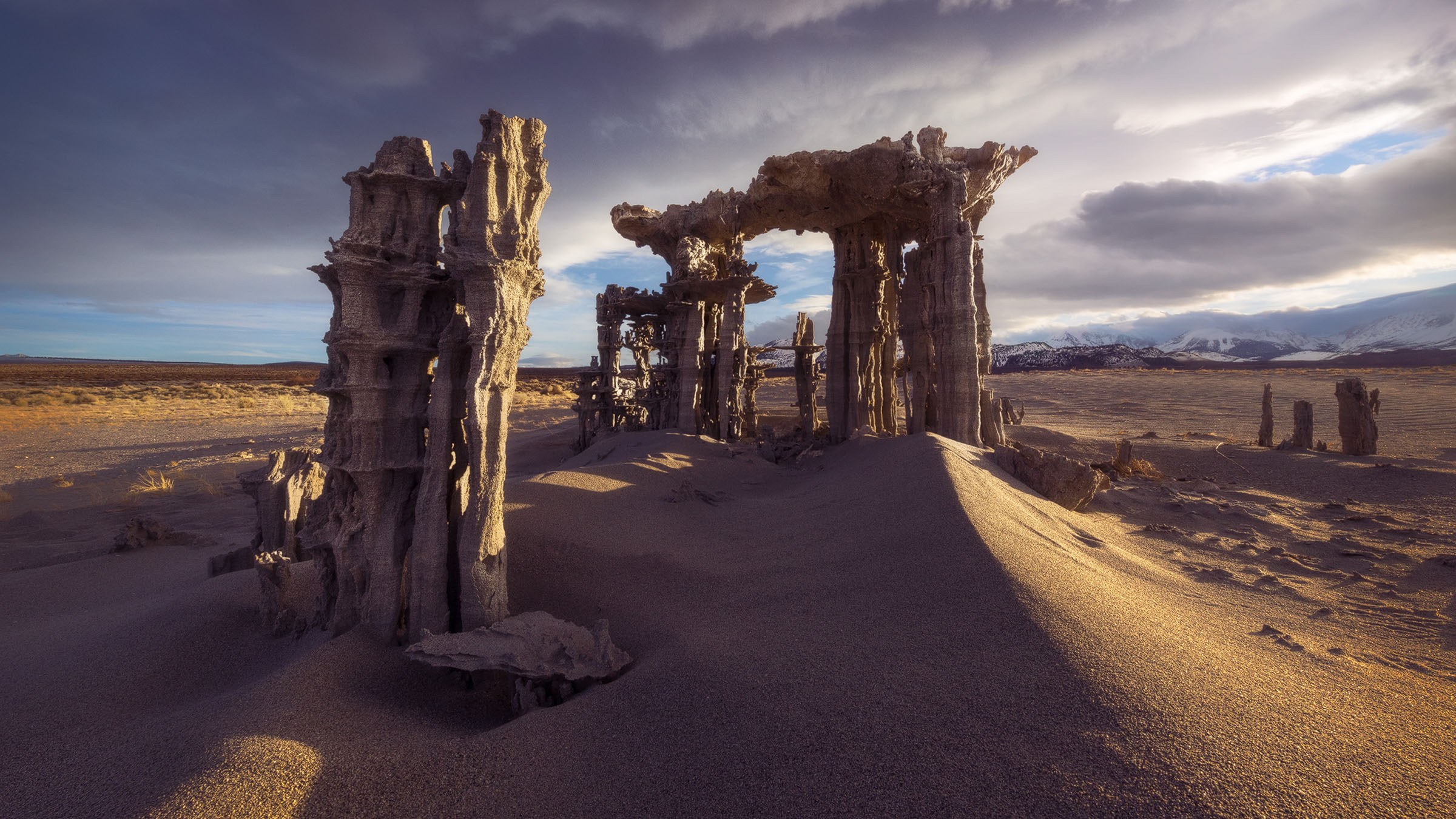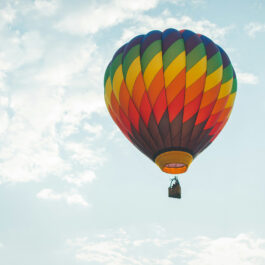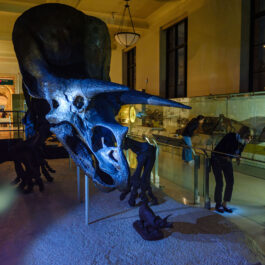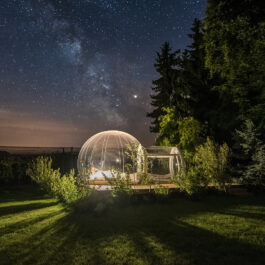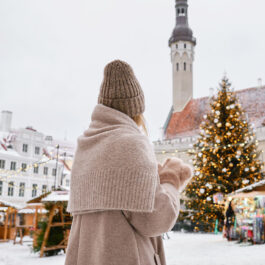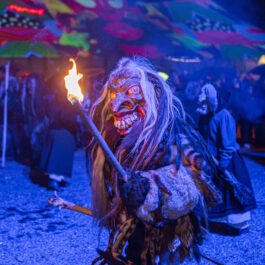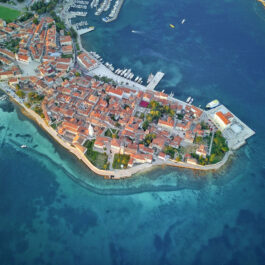From an art historian photographing archaeological finds, to a mountain-scaling, desert-trekking, snow-braving explorer who travels the world in search of her next spectacular shot, Erin Babnik’s journey to landscape photography wasn’t exactly a straight line. Then again, true adventures rarely are.
In normal times, the California native spends most of the year on the go, using her artistic background and expressive photography style to capture the disquieting beauty of some of the most rugged and remote reaches of the planet. An official Canon Explorer of Light and a member of the nature photography team Photo Cascadia, she can also be found giving educational talks and hosting workshops around the world.
We chat with Babnik about her explorations, her inspirations – and her unique wardrobe.
Much of your landscape photography features wild, untamed stretches of wilderness. What is it that draws you to these rugged places?
I truly enjoy the challenge of exploring the expansiveness and chaos of nature and trying to create some order and sense out of it. The more remote I go, the less likely I am to be in a place that seems haunted by the ghosts of a thousand photographers who have photographed it already. Wilderness areas and landscapes that change a lot due to ephemeral conditions are most likely to put me in a space where I can hear myself think and will feel especially energised creatively.
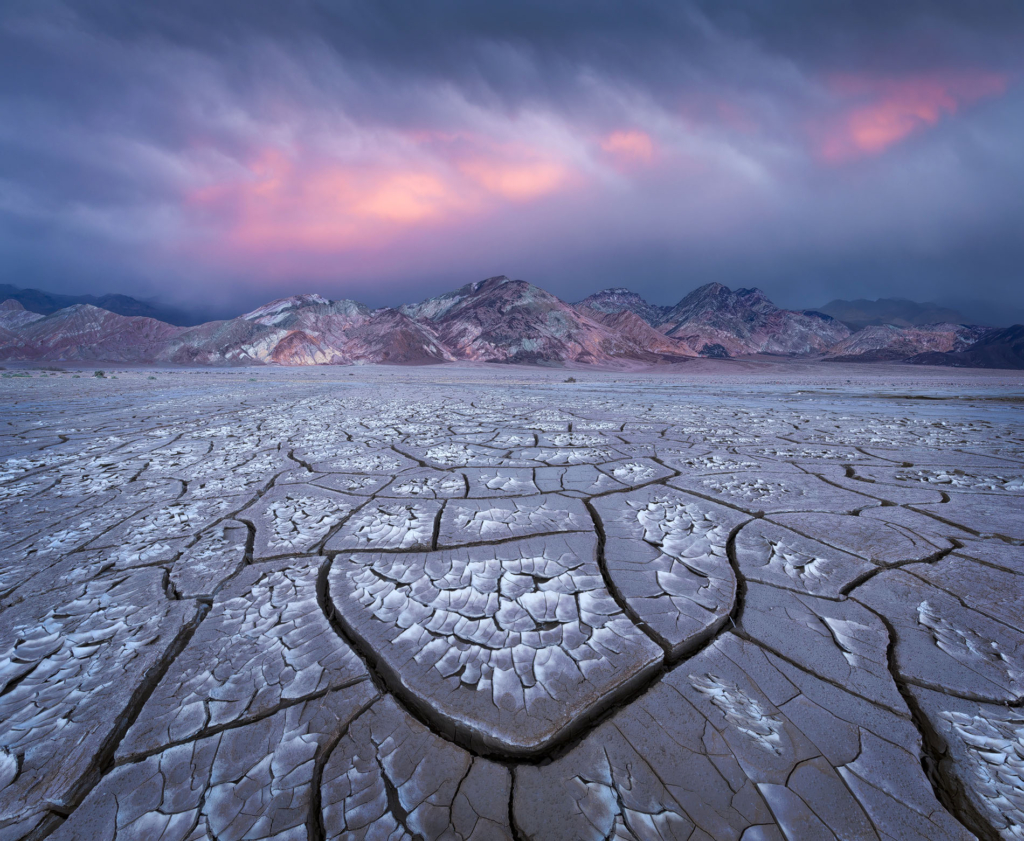
Have you always had a sense of adventure?
Yes, I have always been very fond of exploring outdoor environments. As a young child, I lived in a house so high in the mountains that it was very often higher than the clouds, due to frequent inversion layers. My kindergarten teacher once phoned my mother to express concern about a drawing that I had made in class showing clouds beneath my house, thinking that it might be a sign of some developmental problem! My mother assured her that the drawing was a simple observation of our home as seen from the woodsy slopes surrounding it.
Later, as a teenager and young adult, I took a keen interest in hiking, backpacking and mountain biking, always preferring areas where I could immerse myself in nature and have adventurous experiences. I gave up my outdoor activities almost entirely once I started graduate school, but photography steered me back to them.
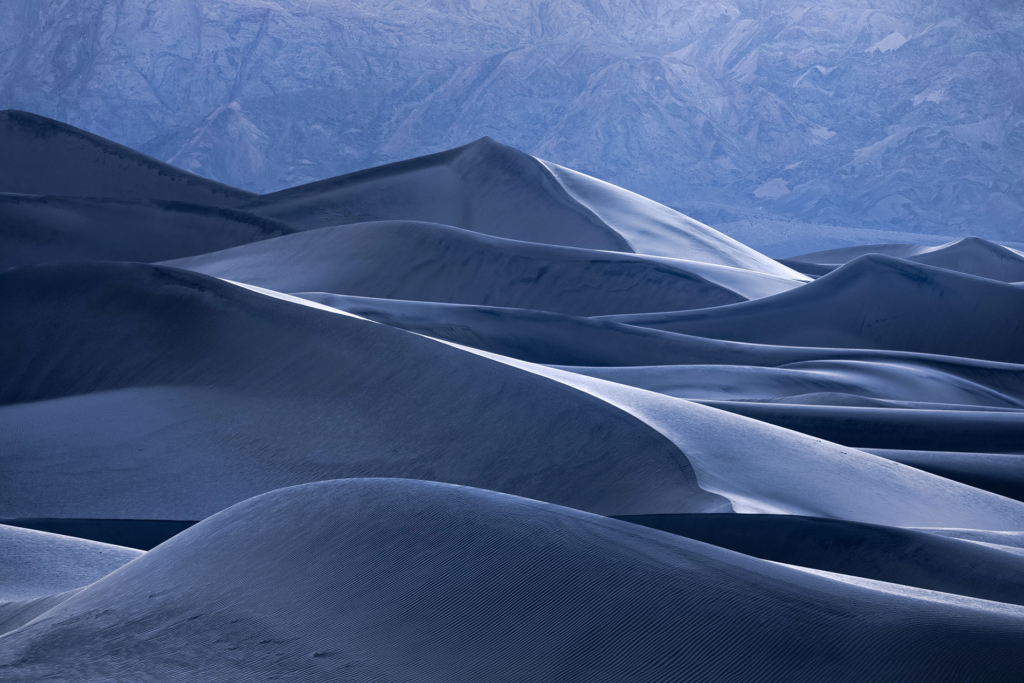
What is one place that truly changed you, and how?
The Dolomites region of Italy is where I first began to find my voice as a photographer. Before social media sites became mainstream, there were limited options for understanding the photographic potential of that region, which actually turned out to be very beneficial for me. I knew that the region had some uniquely craggy peaks, but my knowledge ended there, so I purchased dozens of topographical maps and simply began exploring just to see what I could find to photograph.
Through much hiking and exploring over more than a decade, I have learned as much about myself as I have about the Dolomites region. The photographs that most propelled my career came out of the early years of those explorations, and my experiences in the area helped to evolve my approach to landscape photography quite dramatically.
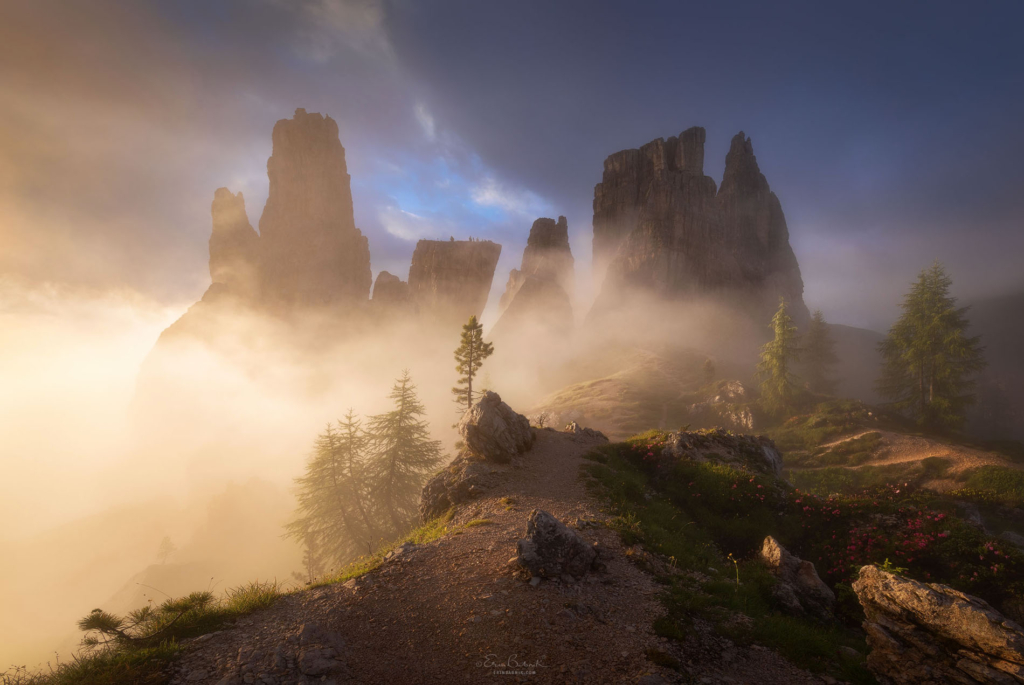
What are the greatest challenges you’ve faced as a photographer and traveller?
The greatest challenges for me mostly stem from the amount of time that I spend travelling each year. Before the pandemic began, I was on the road for workshops, speaking engagements, scouting, and personal photography almost constantly, spending as many as 300 days per year away from home. My husband tries to accompany me for a few trips each year, but we sometimes spend long stretches of time apart. In addition to personal complications of that sort, I’ve faced practical challenges as well. Digital correspondence, receiving mail, getting office work done, and having the equipment that I need wherever I need it: these are all concerns that become especially challenging when I’m left with little windows of time at home between trips.
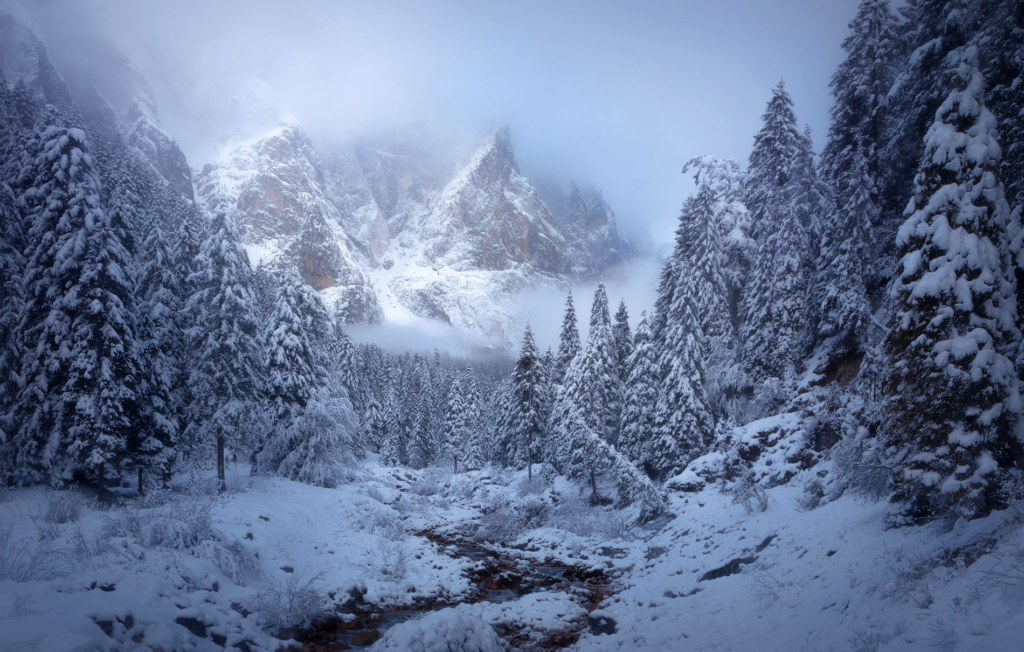
What’s the worst thing that’s gone wrong on a shoot?
I have had a lot of crazy experiences over the years, but the scariest one was probably when I had to rescue a couple of wounded climbers in the Dolomites. I was in between workshops and hiked up to a favourite semi-protected site to photograph a clearing storm with a friend. While we were having a great time behind our tripods, a bright flash of lightning burst out of the sky and struck the summit of a peak about a mile away. Soon after, we heard the unmistakable sound of a massive rockfall. It was too far away for us to see any actual debris, but the sound told the story well enough. Since it looked to us as though the storm had reached its end, we kept on shooting.
About an hour later, I heard a distant male voice crying for help in English and in German and soon spotted two tiny figures hobbling up onto the saddle beneath us. Immediately, I grabbed my trekking poles, abandoned my photo gear, and bounded down the trail to meet them. It turned out that they had been dangling from ropes just one belay lower than the summit when the lightning struck, and the rockfall had pummelled them. One of the two climbers had a broken leg, a broken arm, many open gashes, and a very badly mutilated finger. With much care and a lot of encouraging banter to soothe their nerves, I helped the more able climber to evacuate his friend to a nearby refuge hut, where a helicopter ultimately whisked them away to a hospital.
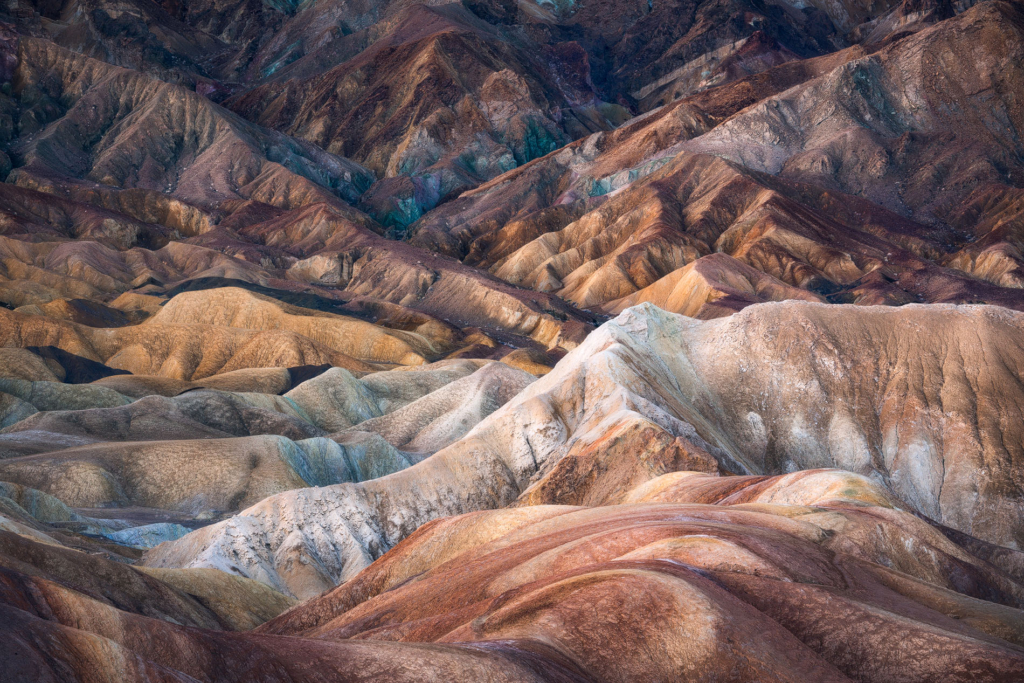
How do you usually decide where you will travel for your next big shoot?
Usually I venture into new areas because I crave a certain aesthetic, such as glaciers in the French Alps or black sand in the Icelandic Highlands. Otherwise, my travel schedule rotates between areas that I know well and never tire of photographing. I spend a lot of time in the Dolomites, in Death Valley, and in the American southwest because those areas always seem to offer changing conditions of one sort or another.
Do you really always wear purple on your shoots? What’s the story there?
Yes, I wear purple not only when I’m out shooting, but almost always, no matter what I’m doing. It started as a colour of choice for safety while hiking in the mountains, because it contrasts well with mountain environments. Purple was popular for mountain wear – even for men – in former decades for that reason, but it held extra appeal to me for its slight nod toward femininity. Over the years it slowly evolved into a branding element, as people started to associate the colour with me and would call me out if they saw a photo of me not wearing any purple. Finally, after I lost everything that I owned when my house burned down in the Paradise Camp Fire, I decided to go all in on the colour purple going forward. Now there are very few items in my wardrobe that are not purple.
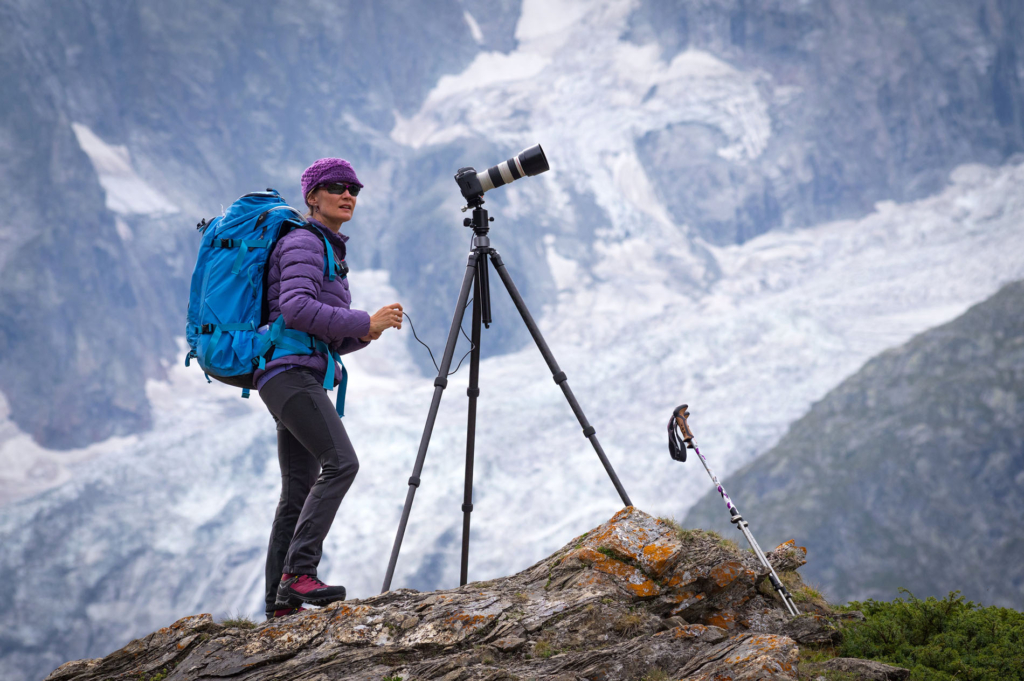
Out of all the shots in your portfolio, which one are you most proud of?
This question is nearly impossible for me to answer because I change my mind so often! One of my favourites is also one of my most popular photos: “Arrow Dynamic” (below).
The story of how I got the shot is less interesting to me than the nature story that it displays. Through exploring the desert and having opportune conditions, I was able to find a composition of sand verbena blooms arranged in a shape that echoed a prominent sand dune in the distance. That much is fairly unremarkable, but the story of the flowers themselves is amazing to me. That such delicate blossoms can tough it out in the harsh and barren environment of sand dunes is a true phenomenon of nature. Moreover, as a woman who spends a lot of time in wilderness areas, I feel a certain affinity with them.
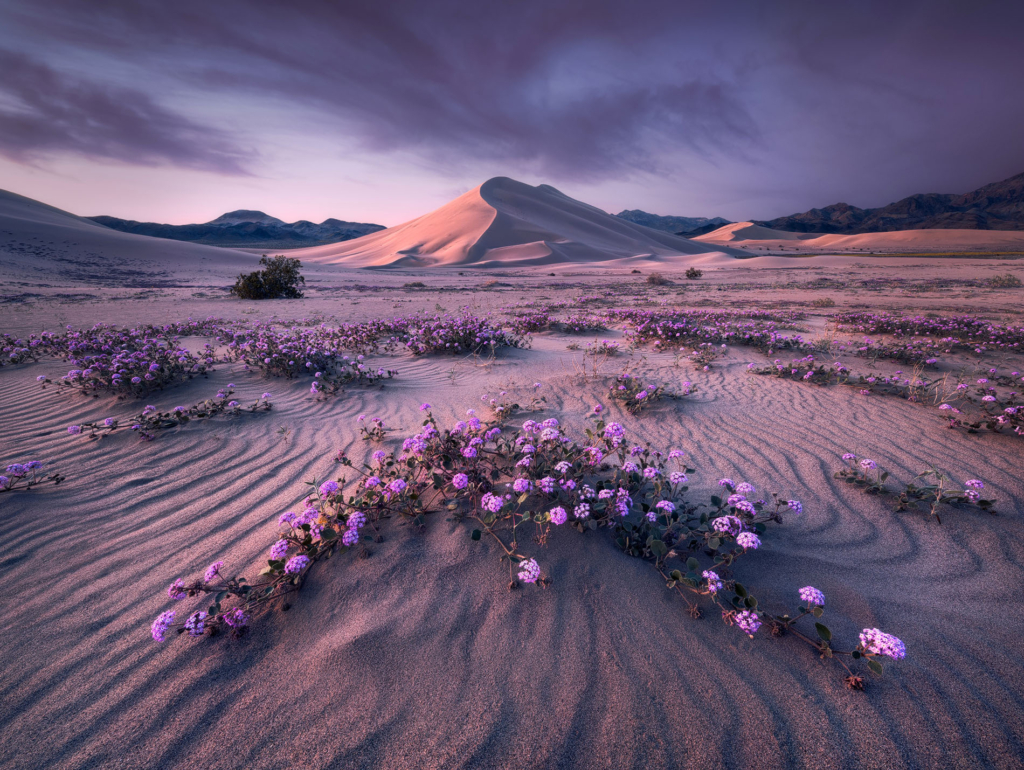
In your opinion, what makes for an exceptional photo?
What I most enjoy seeing in a photo is a discovery of some sort. It might be a topographical feature, a compositional solution, a unique combination of weather and environment, or any number of ideas that display a photographer’s powers of finding something special to show to viewers. When that discovery is presented through compelling choices in timing, technique and post-processing, then the result will probably rise to the level of “exceptional”.
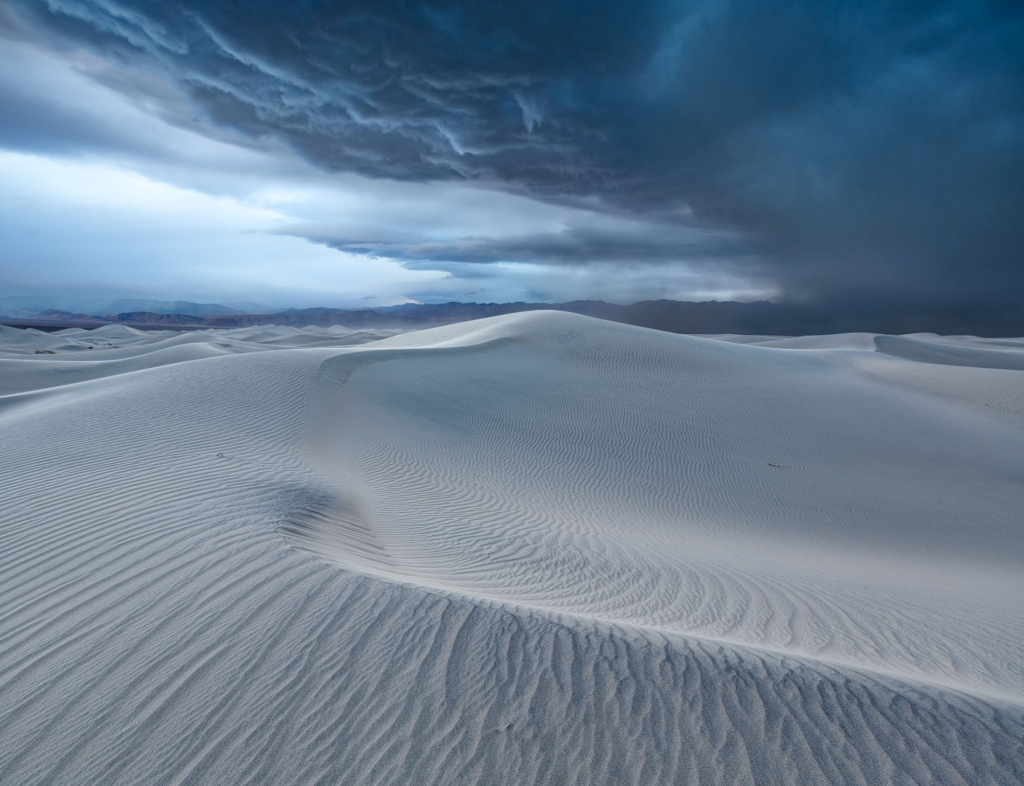
How has the pandemic affected your work? How are you coping?
In the last year I have managed only a couple of trips out, each timed at moments when there were no local lockdowns and the pandemic was not surging. Those brief respites were hardly sufficient to satisfy my desires, but I have found some distinct joy in upgrading both of my offices, in helping to develop a new software product for photographers, and in making numerous virtual appearances for a variety of online events.
And, finally, what are your top three tips for anyone looking to improve their landscape photography skills?
Explore so that you may learn how to see. Experiment so that you will learn how to grow. And never stop learning.
To see more of Erin’s work, visit her on Instagram @erinbabnik.

